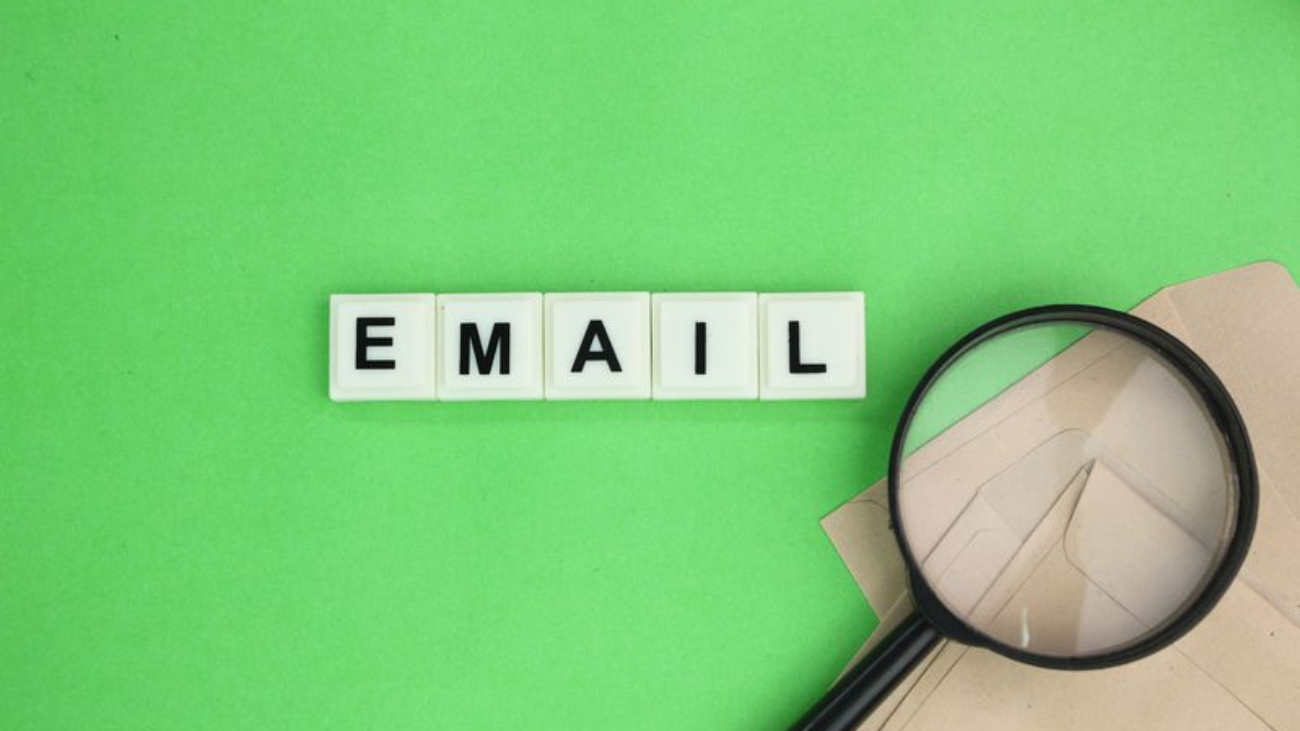1. Introduction to Email Lists
Email lists are an essential component of modern-day communication strategies for businesses, marketers, and individuals alike. These lists provide a direct line of communication with a targeted audience, allowing for personalized interactions and tailored content delivery. In a digital landscape where maintaining connections and engaging with customers is paramount, email lists offer a powerful solution that is both efficient and cost-effective.
Join the Course Today: https://erp.raznameh.org/register-on-marketing-course
Explore the Course Topics: https://erp.raznameh.org/slides/the-sales-and-marketing-playbook-15
Unlike social media platforms that require constant updates to remain visible or instant messaging services that demand immediate responses, email provides a more flexible communication channel that allows for strategic planning and scheduling. This flexibility is especially beneficial for businesses looking to streamline their marketing efforts and reach a wider audience without the constraints of real-time interactions. By curating an email list of potential customers or clients, businesses can effectively showcase their products, services, and ideas in a targeted manner, leading to higher engagement and conversion rates (Andrews, 2023).
In today’s fast-paced digital world, many may argue that newer forms of online communication, such as instant messaging apps or social media platforms, have overshadowed the importance of email. However, research shows that email remains a dominant mode of communication for most internet users, with a majority checking their email accounts regularly. This underscores the enduring relevance and effectiveness of email lists as a communication tool for businesses and individuals seeking to connect with their target audience in a meaningful way (Andrews, 2023).
2. Creating a Valuable Email List
Understanding target audience is the foundation of successful email marketing, and one of the key aspects of attracting the right individuals to your email list. By creating strategies that resonate with your ideal customers and addressing their specific needs and interests, to build a valuable email list that drives engagement and conversions. Before embarking on the journey of building an email list, it is essential to have a deep understanding of who your target audience is. By analyzing their demographics, interests, and challenges, you can tailor your content and messaging to attract the right people to your list. Research shows that aligning your marketing efforts with the needs of your audience leads to higher engagement and conversion rates (Bodnar & Cohen, 2011).
Once you have identified your target audience, the next step is to define their needs and interests. By addressing their pain points and providing valuable solutions, to establish trust and credibility with your audience. This personalized approach not only encourages individuals to subscribe to your email list but also positions your brand as a reliable source of information and assistance.
In order to encourage prospects to take action and join your email list, it is crucial to ask for their connection explicitly. By including clear calls-to-action in your marketing materials and prompting your audience to subscribe or follow your company, you can increase the likelihood of engagement and participation (Bodnar & Cohen, 2011).
Reducing friction in the sign-up process is another key factor in building a valuable email list. By making it easy and convenient for visitors to opt-in through one-click buttons or similar tools, you can minimize obstacles that may deter individuals from joining your list. Streamlining the process leads to higher engagement and conversion rates, ultimately increasing the overall reach of your email marketing campaigns (Bodnar & Cohen, 2011).
Furthermore, continuous testing is essential for optimizing your email marketing efforts. By experimenting with various elements such as subject lines, call-to-action placement, and send times, you can determine what resonates best with your audience and adjust your strategy accordingly. This iterative approach allows you to refine your email campaigns and improve engagement and conversion rates over time.
3. Building Trust and Engagement
Building trust and engagement with subscribers is a crucial aspect of digital marketing that can significantly impact the success of a business. By delivering consistent, valuable content and offering solutions that resonate with the target audience, marketers can cultivate lasting relationships that lead to increased sales and customer loyalty.
Content marketing strategies play a fundamental role in building trust and engagement with subscribers. Consistently producing high-quality content, whether through blog posts, videos, or social media, helps establish credibility and keeps the audience engaged. By sharing relevant, informative, and helpful content, marketers can demonstrate their expertise and build trust with subscribers over time (Andrews, 2023). This continuous relationship-building process sets the foundation for future interactions and opportunities to promote products or services to an engaged audience.
In addition to content marketing, social media engagement can be a powerful tool for connecting with subscribers and driving them to sign up for email lists. Engaging posts, offers, or gated content, such as exclusive resources available only after sign up, can encourage users to join the email list and become part of the marketing communication channel. Once subscribers are connected through social media platforms, marketers can further nurture the relationship by providing regular updates and valuable content that keeps them engaged and interested.
Offering valuable resources, such as lead magnets or free resources, is another effective way to build trust and engagement with subscribers. Lead magnets, which can include eBooks, checklists, or free courses, provide immediate value to subscribers and help establish a foundation of trust. By offering these valuable resources in exchange for email addresses, marketers can start building a relationship with subscribers and gradually introduce higher-value offerings through a “profit ladder” strategy (Andrews, 2023). This approach allows marketers to deepen trust over time and increase the likelihood of subscribers investing in more advanced products or services.
The key to successful online marketing is driving traffic to your website and converting visitors into subscribers, a process known as visitor conversion. There are two main types of traffic that can help you achieve this: paid and free.
Paid traffic methods involve investing in platforms like Google and Facebook ads, banner ads, or purchasing subscriber lists. These methods offer immediate visibility and can quickly drive traffic to your website. On the other hand, free traffic methods, such as social media, forum participation, and blogging, may take longer to generate results but can help you build a large subscriber base over time.
- To effectively grow your email list, it is essential to utilize a combination of paid and free traffic generation methods. Joint ventures, where partners share promotion costs and split profits, can be a powerful way to reach new audiences and drive traffic to website.
- Pay-Per-Click (PPC), Pay-Per-View (PPV), and banner ads are paid methods that can bring targeted traffic to your site. Social media and blogging are effective free methods for generating organic traffic to your website. By sharing valuable content and engaging with your audience on platforms like Facebook, Twitter, and Instagram, you can attract visitors to your site and encourage them to subscribe to your email list.
- Participating in forums, ad swaps, and safelists are other free or paid methods to exchange traffic or subscriber lists with other marketers and grow your email list. Ad swaps involve trading subscriber lists with other marketers, allowing you to reach a new audience and expand your email list. Solo ads are another effective paid method for quickly boosting traffic to your website. In solo ads, marketers recommend your link to their subscribers, driving targeted traffic to your site and increasing your email list.
- Driving sales and conversions through promotional emails is a critical component of any successful marketing strategy. Informational emails play a key role in this process by providing customers with direct updates on products and services, coupons, upcoming promotional campaigns, and event invitations. These emails typically include explicit sales messages and easy-accessible links to the featured products, encouraging customers to make a purchase.
- Lead nurturing emails, as defined by Hubspot, are another essential tool for driving sales and conversions. These emails are part of a connected series that guides users further down the sales funnel. They are triggered automatically when a user takes a specific action, such as downloading a content offer on a landing page or requesting a trial. By sending targeted and personalized emails based on user behavior, businesses can build relationships with customers and increase the likelihood of conversion.
- Once a list of loyal subscribers has been developed by providing high-value content, the next step is to offer a gateway product at a very low price. This gateway offer serves as an entry point for subscribers to make their first purchase and begin their journey towards becoming long-term customers. The goal of this initial offer is not to generate immediate profits but to build trust and loyalty.
- As subscribers move along the customer journey, secondary offers are introduced, gradually increasing in price. This forms a profit ladder, where subscribers are encouraged to purchase more expensive products or services as their trust in the brand grows. These secondary offers can range from low-priced items such as eBooks to mid-priced offers and eventually to high-end offers with price tags reaching $500 to $1,000.
- Finally, the back-end offer is introduced, featuring a premium product or service with a high price tag. While only a small percentage of subscribers may reach this stage, those who do have the potential to generate significant profits for the business. By offering a range of products at different price points and continuously providing value to subscribers, customer loyalty can be cultivated and sustained over time.
4. Collecting Emails Ethically
Email marketing is a powerful tool for businesses to connect with their audience, but collecting emails ethically is essential for maintaining trust and complying with regulations. Opt-in forms and landing pages play a crucial role in this process, as they are the primary means through which users provide their consent to receive emails from you. By designing clear and compelling opt-in forms with strong calls to action, you can encourage visitors to join your email list voluntarily. It is vital to make these forms easily accessible on your website and mobile-friendly to enhance user experience and increase conversions.
Spam practices have no place in ethical email collection. It is imperative to follow permission-based marketing principles and never resort to misleading tactics to obtain email addresses. Users should always have the choice to opt-in freely, without any hidden agendas or pre-checked checkboxes. By obtaining explicit consent from subscribers and ensuring that they understand what they are signing up for, you build a stronger foundation of trust with your audience and protect your brand’s reputation.
Compliance with data protection regulations, such as GDPR and CAN-SPAM, is paramount in ethical email collection. These laws require businesses to obtain explicit consent from individuals before sending them marketing emails and offer a clear way for recipients to opt-out of future communications. Transparency is key in these efforts, as businesses must disclose how subscriber data will be used and provide easy access to privacy policies. By adhering to these regulations, businesses not only stay legally compliant but also demonstrate their commitment to respecting their subscribers’ rights.
Informed consent is a foundational principle in online research and marketing. Utilizing methods such as opt-in buttons on web forms or explicitly stating consent in email interactions ensures that individuals have a clear understanding of their engagement. By incorporating these practices into their email marketing strategies, businesses can build stronger relationships with their audience and foster trust and loyalty over the long term (Cilliers & Viljoen, 2021)
5. Segmenting Your Email List
Segmenting your email list is a fundamental aspect of email marketing that can significantly enhance the effectiveness of your communication efforts. By categorizing subscribers based on demographics, behaviors, or interests, you can customize your messaging to better suit the needs of each segment.
Segmentation enables you to categorize subscribers according to various criteria, such as purchase history or location, allowing you to send targeted messages that are more likely to resonate with the recipients. For example, segmenting based on previous purchases allows you to suggest products or services that align with the subscriber’s past behavior, increasing the chances of conversion (Cenaiko, 2012).
Following the categorization of subscribers, it is crucial to tailor the content of your emails to each segment. Crafting personalized messages that speak directly to the interests and needs of the recipients can boost engagement and improve open and click-through rates. Subscribers are more likely to interact with content that feels relevant to them, leading to a more successful email marketing campaign (Cenaiko, 2012).
Segmentation should be integrated into a comprehensive communication strategy that includes message development, personalization, and market research. By refining your approach to cater to the specific needs of each segment, to ensure that email communication is as effective and relevant as possible, increasing the likelihood of conversion and long-term engagement.
6. Growing Your Email List
Growing your email list is an essential strategy for any business looking to expand its reach and increase its customer base. In today’s digital age, email marketing remains one of the most effective ways to communicate with potential customers and generate leads. However, simply sending out generic emails to a list of contacts is no longer enough to capture the attention of recipients. To effectively grow your email list, you need to employ a variety of lead generation techniques that will entice users to subscribe to your mailing list.
One key strategy for growing your email list is to create unique email content that is both engaging and valuable to your subscribers. By providing content that is entertaining, informative, and relevant to their needs, you can build a strong relationship with your audience and encourage them to look forward to receiving your emails. This will increase the likelihood that they will open, read, and share your emails with their networks, helping you to reach a wider audience and attract new subscribers.
In addition to creating compelling email content, it is important to encourage your subscribers to share and forward your emails to their friends and colleagues. Including social sharing buttons and an “Email to a Friend” button in your marketing emails makes it easy for recipients to pass along your content to others, expanding your reach and increasing your chances of gaining new subscribers. By including a simple “Subscribe” call-to-action at the bottom of your emails, you make it easy for new recipients to opt-in to your mailing list and receive future communications.
Segmenting your email lists by buyer persona is another effective strategy for growing your email list. By creating targeted subscriber types based on the interests and preferences of different segments of your audience, you can increase the likelihood that visitors will subscribe to one of them. Marketers who use segmented campaigns have seen significant increases in revenue, as recipients are more likely to click through emails that cater to their specific interests.
If you have an older email list that has gone stale, consider launching an opt-in campaign to re-engage your contacts and encourage them to re-opt in if they are still interested in receiving your emails. By removing contacts who do not respond, you can improve your deliverability and increase the chances of your emails being shared with others outside your current database.
To further boost your email list growth, consider creating new lead-generation offers, such as free ebooks or online tools, that require users to provide their email addresses to access. Hosting these offers on landing pages with clear calls-to-action can entice visitors to subscribe to your mailing list in exchange for valuable content.
Promoting your lead-generation offers on social media platforms like Twitter, Facebook, Pinterest, Instagram, and LinkedIn is another effective way to attract new subscribers. By sharing snippets of your content, offering giveaways, and directing users to sign-up landing pages, you can entice users to join your email list and receive additional value from your business.
Finally, A/B testing different campaign copy and linking to offers across your website that capture email sign-ups can help you optimize your lead generation efforts and increase your email list growth. By analyzing the performance of your campaigns and making adjustments based on user feedback, you can continuously improve your list-building strategies and drive more conversions.
7. Optimizing Your Website for Conversions
In today’s digital age, email marketing remains a powerful tool for businesses to connect with their audience and drive conversions. One key aspect of maximizing the effectiveness of email marketing efforts is optimizing your website for conversions. By creating a user-friendly experience and implementing clear calls-to-action (CTAs), to increase the likelihood of visitors signing up for your email list.
One fundamental element of optimizing your website for conversions is to incorporate clear and compelling CTAs. These CTAs should be strategically placed throughout your website in high-traffic areas to encourage visitors to take action. For example, placing CTAs at the end of blog posts, on landing pages, and within sidebars can prompt visitors to sign up for exclusive content, updates, or offers (Baumgartner, 2017).
Another crucial aspect of website optimization is ensuring that your site is user-friendly and easily navigable. A well-designed website can guide visitors through the process of signing up for your email list seamlessly. It is essential to have prominently displayed sign-up forms that are visible and accessible to visitors. Furthermore, with the growing number of users accessing websites on mobile devices, optimizing your site for mobile use is equally important. Responsive landing pages and sign-up forms that load quickly on mobile devices can prevent potential subscribers from being deterred by a poor user experience (Baumgartner, 2017).
In addition to optimizing your website, it is essential to focus on email optimization to improve conversion rates. Clear and direct subject lines, personalized messages, and clickable buttons can make it easier for readers to take action. Mobile-friendliness and large, easy-to-click buttons in emails can also enhance the overall user experience and increase conversions.
By implementing these strategies to optimize your website for conversions and focusing on email optimization, you can create a seamless experience for users that encourages them to subscribe to your email list. Ultimately, by providing valuable content and making it easy for visitors to take action, you can increase conversions and drive the success of your email marketing campaigns.
8. Email Marketing Best Practices
Email marketing has become a staple for businesses looking to reach out to their target audience in a personalized and effective way. However, mastering the art of email marketing requires careful planning, experimentation, and a deep understanding of your audience. In this essay, we will explore some of the best practices in email marketing at the master level.
One of the first steps in a successful email marketing campaign is getting to know your audience. Understanding your recipients on a granular level will help you tailor your messages to resonate with them. Consider factors such as how and when they prefer communication, their unique vernacular or slang, and what sets them apart from the general population. While you may not have all the answers initially, gathering data over time will provide valuable insights to help you refine your email strategy.
Experimentation is another key aspect of mastering email marketing. A/B testing allows you to test different elements of your emails, such as subject lines and calls to action, to see what resonates with your audience. Make sure to test only one element at a time, have a significant sample size, and move on to the next test once you have conclusive results. Remember that email marketing is a dynamic field, and continuous testing is necessary to adapt to changing trends and preferences.
Before sending out your email campaign, it’s crucial to follow a pre-send checklist. Testing your email for rendering issues, typos, broken links, and spammy elements is essential to ensure that your recipients can engage with your content effectively. Creating a checklist tailored to your program will help you maintain a seamless sending experience every time.
Choosing meaningful metrics to track and measure the success of your email campaigns is vital. Depending on the purpose of your email, focus on metrics such as open rate, click-through rate, and click-to-open rate to gauge the effectiveness of your message. Personalizing your emails and focusing on quality over frequency will also lead to higher engagement and conversion rates.
During the holiday season, it’s important to be mindful of your email frequency and content to avoid overwhelming your subscribers. Modifying your preference centers to allow subscribers to opt into holiday communications can help set expectations and tailor your content accordingly. Additionally, focusing on timing by sending emails at optimal times can increase engagement from your recipients.
Rewarding your VIP recipients and reviewing your landing pages to ensure a seamless user experience are also crucial components of a successful email marketing strategy. Leveraging artificial intelligence tools can help streamline processes and provide valuable insights to personalize your emails and optimize your campaigns.
9. Dealing with Email Deliverability Issues
Maintaining a clean email list is essential to improving deliverability rates. Regularly purging inactive subscribers and those who have not engaged with emails for a certain period is crucial to ensure that email lists remain active and engaged. Not only does a clean list lead to higher engagement rates, but it also helps in reducing emails being marked as spam (Pham, 2015). By maintaining a clean list, marketers can enhance their sender reputation with Internet Service Providers (ISPs), thereby improving the chances of their emails reaching subscribers’ inboxes.
Spam traps pose a significant threat to email deliverability, as sending emails to them can severely impact sender reputation. To avoid falling into spam traps, marketers should implement proper opt-in methods, such as double opt-ins, where subscribers confirm their email addresses before being added to the email list. This practice helps in ensuring that emails are only sent to legitimate and interested recipients, reducing the likelihood of triggering spam filters (Pham, 2015).
Monitoring email deliverability metrics is crucial for identifying and addressing potential issues that may affect email performance. By tracking metrics such as open rates, bounce rates, and spam complaints, marketers can quickly detect any anomalies and take corrective actions to maintain good deliverability rates. For example, a sudden increase in bounce rates may indicate a need to review list hygiene practices or adjust content strategies to better engage the audience (Pham, 2015).
Legal compliance and optimizing subject lines also play a vital role in improving email deliverability. Subject lines should be clear, concise, and relevant to the email content to avoid misleading recipients and reduce the risk of being marked as spam. By adhering to email marketing regulations and crafting compelling subject lines, marketers can enhance their email deliverability rates and increase the likelihood of emails reaching subscribers’ inboxes.
10. Leveraging Your Email List
Businesses have long relied on email marketing as a cost-effective tool to communicate with customers and prospects. Despite the ever-evolving landscape of communication technologies, email remains a crucial channel for reaching out to target audiences. Leveraging your email list effectively can help small businesses achieve their business goals and drive engagement. Here are eight key strategies that businesses can employ to make the most out of their email marketing efforts.
First and foremost, building a robust email list is essential for any successful email marketing campaign. Small businesses should actively collect email addresses from website visitors, customers, and prospects. Incentives such as exclusive discounts, free content, or early access to new products can encourage sign-ups and attract more subscribers. Utilizing versatile tools available in the market can aid small businesses in efficiently collecting, organizing, and leveraging email addresses.
Segmenting your email list based on customer demographics, behavior, or interests is the next crucial step. By dividing your list into distinct groups, you can tailor your emails to better suit the preferences of your target audience. This targeted approach increases the likelihood of engagement and conversion.
Creating a content calendar enables you to plan your email content in advance, ensuring that your emails are timely, relevant, and aligned with your business goals. Your content calendar can include promotions, educational materials, customer success stories, and more, catering to the diverse needs and interests of your subscribers.
Personalizing your emails by addressing subscribers by their names and offering tailored product recommendations can enhance the personal connection with your audience. Attention-grabbing subject lines play a vital role in enticing recipients to open your emails. Craft compelling subject lines that resonate with your audience and pique their curiosity.
Optimizing your emails for mobile devices is critical, as a significant portion of email opens occur on smartphones and tablets. Employ responsive email designs that adapt to various screen sizes, ensuring a seamless viewing experience for mobile users.
Testing and iterating on different email strategies allows you to refine your approach over time and optimize your email campaigns for maximum effectiveness. By analyzing metrics such as open rates, click-through rates, and conversion rates, you can gauge the performance of your campaigns and make data-driven decisions to enhance results.
Additionally, With the rise of social media and other digital marketing channels, email marketing continues to be a powerful tool for engaging with customers and driving sales. One of the most effective ways to grow your email list is to run promotions on partner websites or email newsletters.
Partner websites can help you target a new audience that may not be familiar with your brand. By collaborating with a partner in your industry, you can reach potential customers who are already interested in similar products or services. By directing visitors to your website, where you have sign-up forms available, you can easily capture their contact information for future email marketing campaigns.
Another effective strategy for leveraging your email list is to host a co-marketing offer with a partner. By creating an ebook or webinar together, you can share the workload of content creation and access each other’s audience. This allows you to generate leads from a new audience and collect email addresses for further nurturing. Splitting the leads you generate with your partner is a win-win situation that can help both businesses grow their email lists and reach more potential customers.
In addition to online strategies, offline events like trade shows can also be great opportunities to collect email addresses. By demoing your latest product at a trade show, you can interact with potential customers face-to-face and collect sign-ups in person. Once you’re back at the office, be sure to import these sign-ups into your contact database and send a welcome email to confirm their opt-in to your list.
Hosting your own offline, in-person events such as meetups, seminars, or hackathons can also be effective ways to collect email addresses from attendees. These events place you front and center in a networking setting, allowing you to connect with qualified leads who have shown interest in your business. Sending a welcome email and encouraging opt-in can help you nurture these leads and convert them into loyal customers.
Webinars are another powerful tool for growing your email list. By hosting an online webinar, you can engage with your audience and access the email addresses of those who register. This allows you to add new contacts to your list for further nurturing and conversion.
Incorporating QR codes into your display ads or collecting emails in-store are additional strategies that can help you grow your email list. By leveraging multiple tactics and reaching your audience from various angles, you can increase the chances of growing your email list and converting leads into sales-ready customers.
Overall, leveraging your email list is a crucial aspect of any business’s marketing strategy. By using a combination of online and offline tactics, you can grow your list with fresh, opt-in contacts and nurture them with targeted offers to drive sales and business growth.
11. Measuring Success: Key Metrics for Email Lists
Measuring success in email marketing requires tracking key metrics to determine the effectiveness of your campaigns. Among the top metrics to consider are clickthrough rate, open rate, conversion rate, bounce rate, list growth rate, email sharing/forwarding rate, overall ROI, and unsubscribe rate.
Clickthrough rate (CTR) is the percentage of email recipients who click on one or more links in an email. It is calculated by dividing total or unique clicks by the number of delivered emails and multiplying the result by 100. CTR is essential for monitoring the performance of individual emails and for conducting A/B tests to optimize click rates.
Open rate is the percentage of recipients who open an email, but it can be misleading due to image-blocking settings on email clients. Conversion rate measures the percentage of recipients who take a desired action after clicking a link in an email, such as completing a form or making a purchase. Both metrics are crucial for evaluating the impact of your email campaigns on achieving specific goals.
Bounce rate indicates the percentage of emails that were not successfully delivered, with hard bounces resulting from invalid addresses and soft bounces from temporary issues. List growth rate measures the rate at which your email list is increasing, taking into account new subscribers, unsubscribes, and complaints. Monitoring list growth is essential to counteract natural decay in email lists.
Email sharing/forwarding rate reflects the percentage of recipients who share or forward emails, helping to reach new contacts beyond your existing list. Overall ROI calculates the return on investment for your email campaigns by dividing additional revenue by campaign costs.
Unsubscribe rate measures the percentage of recipients who unsubscribe after opening an email, although it may not fully represent disengagement as some recipients may simply stop interacting with emails.
12. Common Mistakes to Avoid When Building an Email List
One of the major drawbacks is the issue of low deliverability, with approximately 20% of emails being filtered out due to spam filters, firewalls, and blacklists. This can result in significant revenue loss for companies. Additionally, excessive emails sent to untargeted recipients can lead to lower response rates, delivery rates, and click-through rates, ultimately irritating customers.
Another drawback of email marketing is the challenge of low subscriber engagement. Studies have shown that readers take only about five seconds to engage with an email, often skimming through without fully reading the content. Emails lacking engaging subject lines or relevant content may fail to convert subscribers into repeat buyers. Moreover, regulating email frequency is crucial to avoid overwhelming subscribers or causing them to forget they subscribed.
Design issues also pose a challenge in email marketing campaigns. While email design plays a critical role in capturing the reader’s attention, email filters often block logos, graphics, and images to counteract spammers. Furthermore, emails may render differently across various devices, leading to inconsistent formatting and reduced impact on the message.
On top of these challenges, email marketers must also navigate legal issues such as complying with data protection and privacy laws like the Data Protection Act 1998, the CAN-SPAM Act 2003, and the EU General Data Protection Regulation (GDPR). These laws govern how marketers can use personal data and send emails, requiring clear headers, opt-out options, and data protection protocols to be implemented.
13. Conclusion
A well-curated email list serves as a powerful tool that drives customer loyalty, engagement, and long-term sales growth. By applying the strategies shared throughout this article—such as consistently maintaining a clean list, segmenting subscribers, and optimizing your emails for deliverability—you ensure your email marketing efforts remain effective and relevant.
Maintaining a clean list by removing inactive subscribers helps improve deliverability rates and strengthens your sender reputation. Segmenting your audience based on interests, behaviors, or demographics ensures that each group receives targeted and personalized content that resonates with them, leading to higher open and click-through rates.
At the same time, consistently providing valuable content through well-constructed subject lines, clear messaging, and a user-friendly website ensures your audience remains engaged. Optimizing your website with compelling call-to-action buttons and making it mobile-friendly enables smooth conversions, encouraging visitors to join your list.
Furthermore, by monitoring deliverability metrics and ensuring compliance with data privacy regulations, you minimize the risk of your emails being marked as spam and protect your brand’s reputation. Using ethical email collection practices through proper opt-ins and transparent communication builds trust with your audience, keeping your marketing legally compliant and maintaining positive relationships with subscribers.
In conclusion, consistently offering value and fostering trust will transform your email list into a long-term marketing asset. By refining your strategies and engaging your audience with relevant, timely content, you can ensure that your email list remains a vital tool for your business’s success and growth.
Written by Eren Bilgin Sagdic













